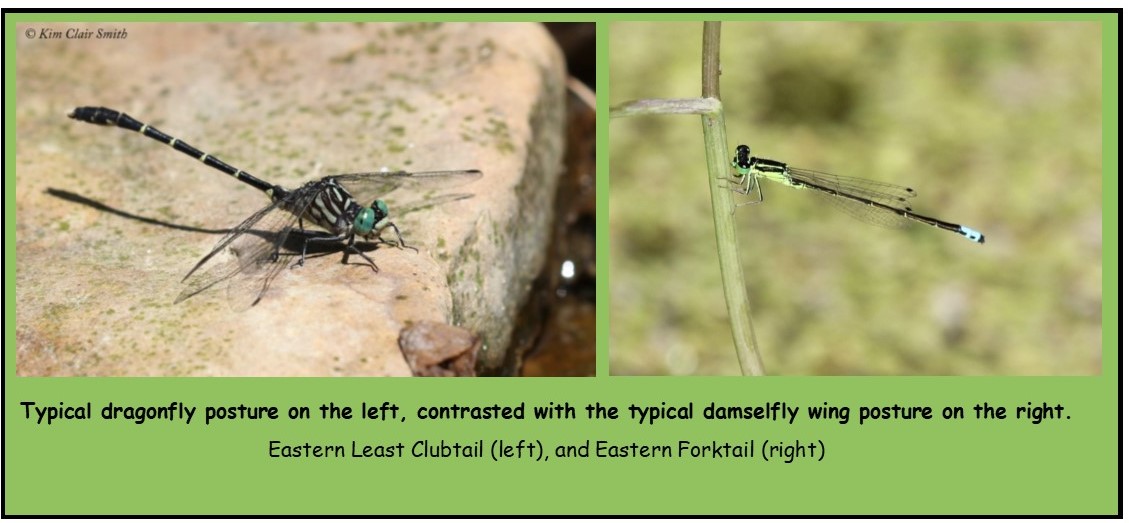Whether you’re just beginning to watch dragon- and damselflies or have been doing it for a while, I hope the information here will be useful to you. I’m not anywhere near an insect expert, but am a naturalist with a love of these charismatic flying insects.
What’s that Bug?
Dragonflies and damselflies belong to the insect order Odonata. We often refer to them as odes. You may hear us call them bugs too, even though they aren’t true bugs. An entomologist would cringe to hear us use that term incorrectly, but it’s just easier to say “bug” sometimes when you’re among people who understand that you’re just using it as a form of shorthand.
There are approximately 465 species of Odonata in North America. The vast majority are dragonflies (Anisoptera), with about 328 species. The remaining 137 species are damselflies (Zygoptera).
You can read more about the differences between dragons and damsels in the resources listed below, but basically, dragonflies are the bigger ones that rest with their wings spread out flat, while damselflies are the smaller ones that rest with their wings folded back over their abdomens.
Oodles of Odes
In July of 2021, I presented a program for Ottawa National Wildlife Refuge about the dragonflies and damselflies of northwest Ohio. You can watch it on YouTube by clicking the image below.

Resources for Identification
Dragonflies and Damselflies of Ohio – field guide booklet prepared by the Ohio Division of Wildlife. These are available in print form as well as in PDF format on the Ohio DNR website. This is an excellent (& free) beginner resource.
Odonata Central has maps for sightings of each species, as well as photos.
Dragonfly ID is a great free app for both iPhones and Android phones. It functions as a digital field guide and allows you to keep a life list of odes you’ve seen.
iNaturalist is a great all-around platform for reporting your sightings of any type of flora or fauna, and it can often tell you the species as soon as you upload your photo. The Ohio Dragonfly Survey uses iNat to accept submissions to its project there (Search “projects” for “Ohio Dragonfly Survey”). There’s no cost to use iNat, and it’s easy to set up a free account and begin meeting other people with similar nature interests to yours.
Print Field Guides I Use
Dragonflies and Damselflies of the East, by Dennis Paulson. This one covers the eastern parts of the U.S. and Canada, and is my primary field guide covering all the species I’m likely to see here in Ohio and Michigan. (Dennis has also published Dragonflies and Damselflies of the West.)
Dragonflies and Damselflies of Northeast Ohio, by Larry Rosche, Judy Semroc, and Linda Gilbert. Even though I live in northwest Ohio, this book is invaluable to me for its additional photos and information.
Damselflies of the Northeast, by Ed Lam. This book has wonderful detailed illustrations of damselflies and their markings.
What I’ve Written About Odonata on this Blog
This is a link to the search results for the term odonata on this blog: https://natureismytherapy.com/category/insects/odonata-dragons-and-damsels/page/1/
(You can also use the search box on the right sidebar to search for any specific species you’re interested in.)
Dragonfly Pond Guidelines
The Migratory Dragonfly Partnership project website has been taken down due to lack of funding, but on 6-26-23 they gave me permission to share this document with you. Dragonfly Pond Guidelines
Other fun dragonfly stuff
Here’s an amazing video of how nymphs use their labium to grab prey underwater: https://youtu.be/EHo_9wnnUTE

